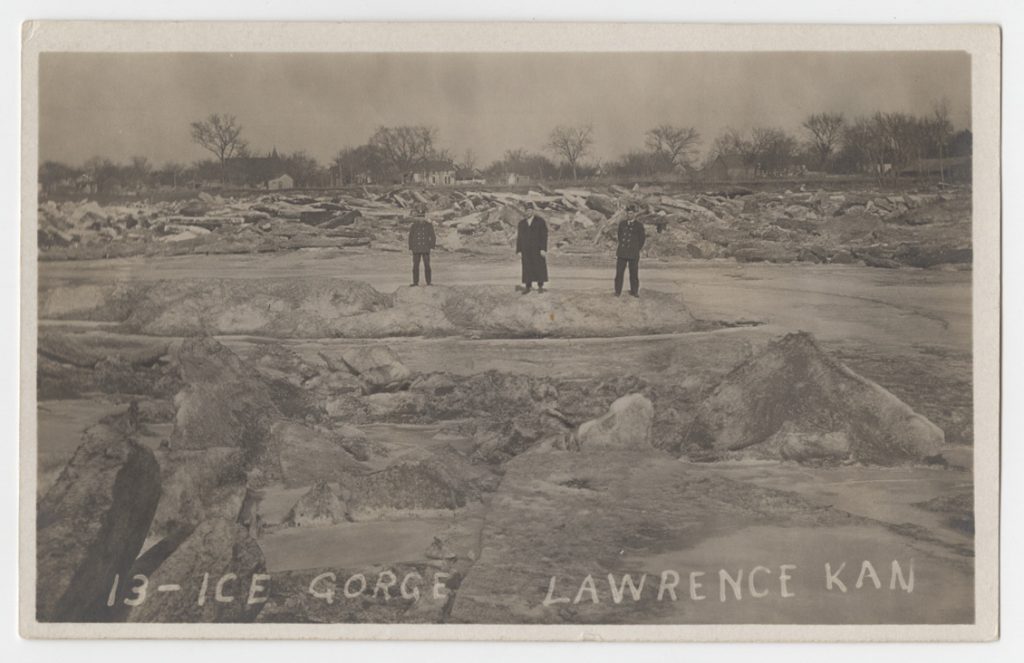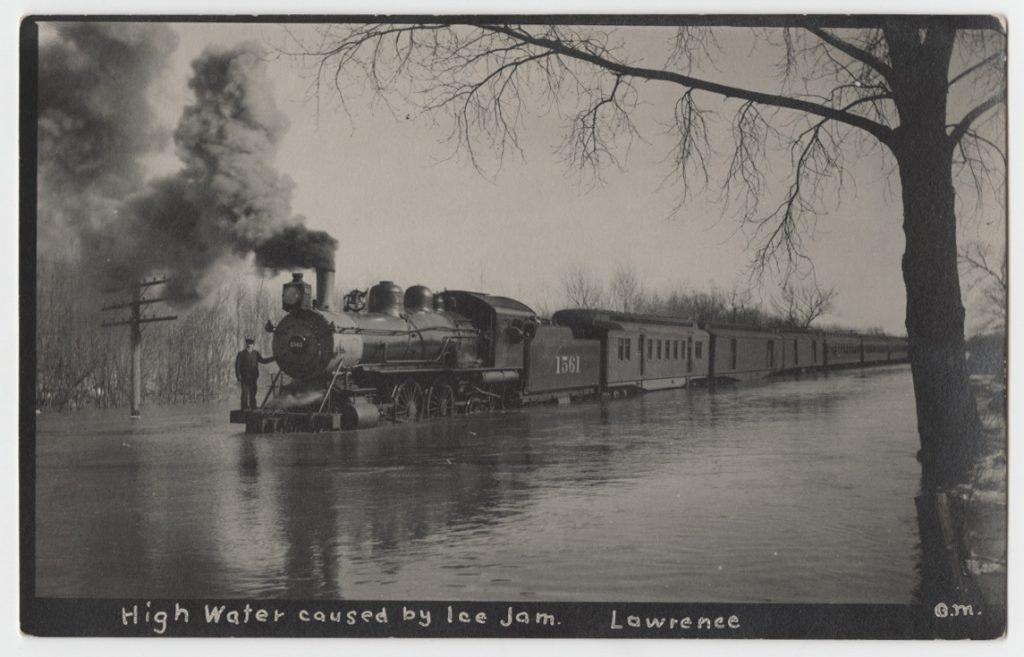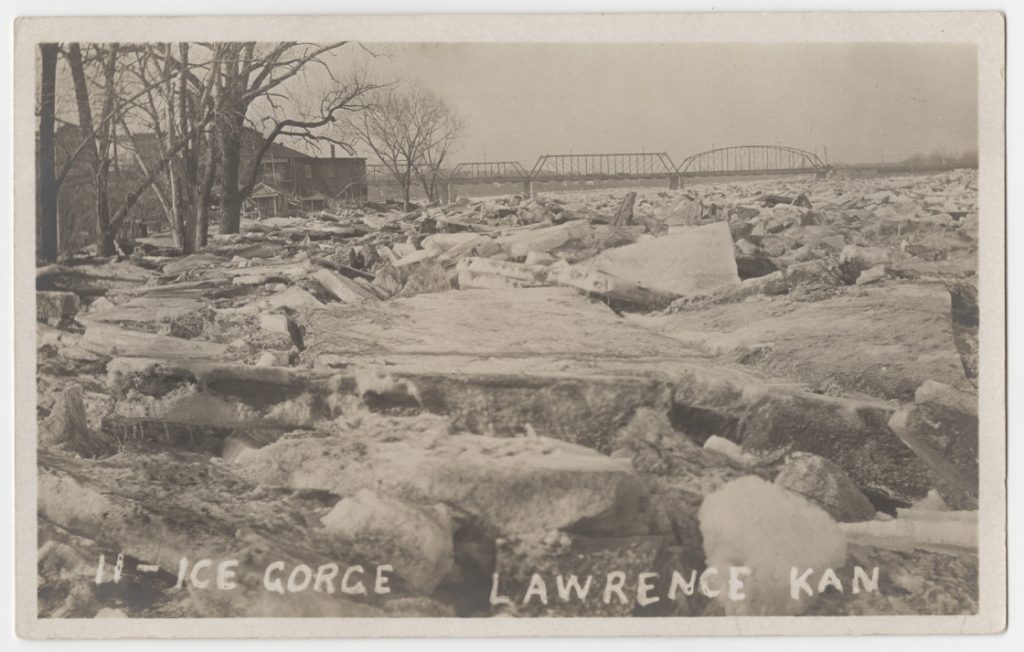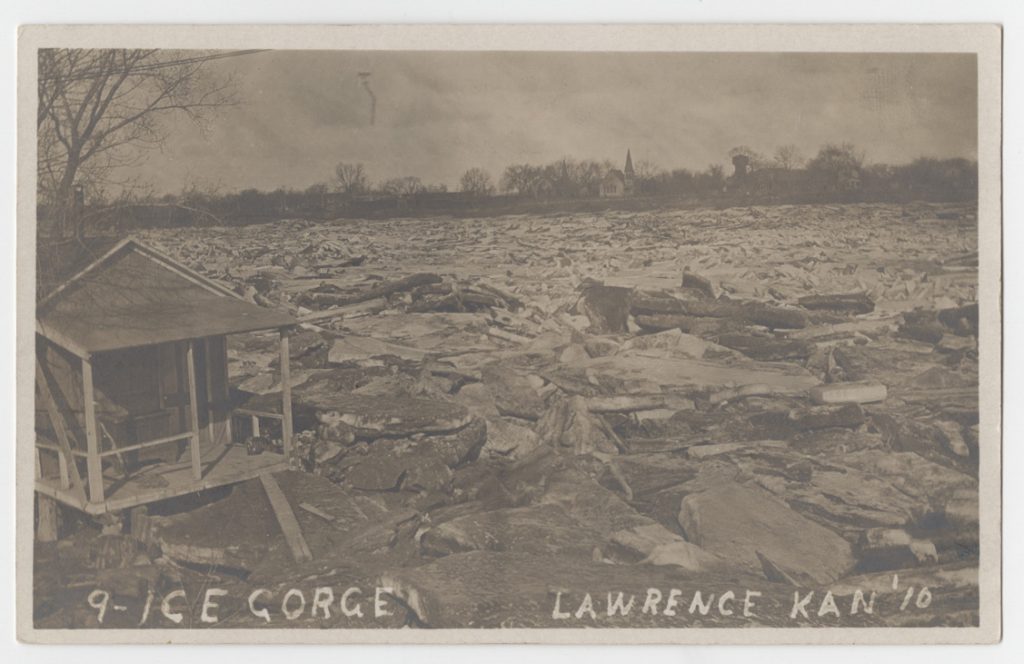The Lawrence Ice Jam of 1910
January 30th, 2018Postcard images in Spencer’s Lawrence Photo Collection document the destruction and disruption caused by large ice jams (or ice gorges) along the Kansas (Kaw) River near Lawrence in January 1910. Articles from area newspapers provide additional details about the situation. For example, the Topeka Daily Capital reported on January 15th that “travel on the Santa Fe [railroad] tracks between Lecompton and Lawrence is practically blocked and all westbound Santa Fe trains are coming into Topeka over the Union Pacific tracks.”
Between Lecompton and Lawrence the tracks are partially submerged with water and ice and from the bridge across the Kaw river at Lawrence three miles this way the Santa Fe tracks are covered with from one to three feet of water and ice. An immense ice jam has formed at the bridge at Lawrence and the checking of the river’s flow has forced the water over the tracks. The jam is about six miles long.
The ice gorge at Lawrence, 1910. Lawrence Photo Collection.
Call Number: RH PH 18. Click image to enlarge.
Newspapers also described how widespread the problem was elsewhere along the Kaw and other rivers, in Kansas and beyond. A headline on the front page of the Topeka Daily Capital on January 15th stated that an “ice gorge in [the] Mississippi [River] in St. Louis goes out causing damage estimated at $200,000.”
High water caused by an ice jam, Lawrence, 1910.
Lawrence Photo Collection. Call Number: RH PH 18. Click image to enlarge.
The ice gorge at Lawrence, 1910. Lawrence Photo Collection.
Call Number: RH PH 18. Click images to enlarge.
A letter to the World from Burt Brown, who is at Junction City, says: “The ice has broken in the Republican river today, and at Ft. Riley the Kaw river is full of floating ice. The water is considerable above the normal stage. If all the floating ice I saw in the Kaw east of Ft. Riley reaches the ice jam at Lawrence it will surely do some damage there.”
Lawrence Daily World, January 27, 1910
Lawrence, Kan., Jan 28. — Even being a fish has had its handicaps lately, and the dwellers in the Kaw thought that the world had come to end when the ice began moving. Lou McCann was standing near the water’s edge watching the ice move down the stream, when almost at his feet a forty pound catfish was crowded out on the bank, and started for the timber to [e]scape the ice. McCann, who is fleet of foot, took after it and soon overhauled the monster cat and put it out of harm’s way.
Topeka State Journal, January 28, 1910
Since the ice gorge at Lawrence has been broken and the water has receded to the channel of the river, the Santa Fe has been able to restore its train service to normal condition.
Osage City Free Press, February 10, 1910
The county boards of Jefferson and Douglas counties held a conference at the Lecompton bridge this week for the purpose of taking some action to repair the bridge, which was partially destroyed by an ice jam in January. Nothing definite was accomplished. All three of the wrecked spans are in sight; one is about 100 feet from the wrecked bridge, one about 150 feet and the third about 400 yards distant at the mouth of the Delaware. Their condition could not be ascertained, owing to the mush ice in the river and the fact that they are partly buried in sand which is rapidly forming a bar around them…Cal Walton estimates that it will take $14,000 to repair the damage.
Lawrence Daily World, February 26, 1910
Meredith Huff
Public Services




